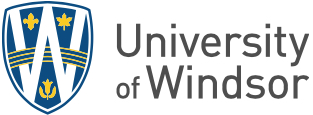A
account
The account is created during registration or by an administrator. This account is used to connect content to the interacting user.
anonymous
A visitor to a Drupal website who is not currently logged in. Drupal considers any such visitor as being the anonymous user, with the user ID 0, and belonging to the anonymous user role.
article
One of two content types that are enabled in the standard installation profile. Articles are used for time-sensitive content like news, press releases or blog posts. This content type is called “Article” in Drupal 7 and later, and “Story” in earlier versions of Drupal.
authenticated
A visitor to a Drupal website who is currently logged in. University websites verify authenticated users through there UWin ID.
B
basic page
One of two content types that are enabled in the standard installation profile. Typically basic pages are used for static content that can (but are not required to) be linked into the main navigation bar. This content type is called “Basic page” in Drupal 7 and later, and “Page” in earlier versions of Drupal.
base theme
A Base theme is a well-written set of CSS and template files that a theme developer can make use of in a new custom theme. Theme developers can make sub themes to override the default base theme. The base theme for the University of Windsor is set by ITS/PAC and cannot be over-ridden.
block
The boxes visible in the regions of a Drupal website. Most blocks (e.g. recent forum topics) are generated on-the-fly by various Drupal modules, but they can be created in the administer blocks area of a Drupal site. See the documentation for more information on blocks.
C
child
Objects that can have hierarchical relationships, such as menu items, book pages, taxonomy terms and so on. A “child” menu item, for example, is nested under another menu item, which is referred to as the “parent” menu item.
content
The text, images, and other information on a web site. Besides nodes there is more content on a typical Drupal site, such as comments and file attachments.
content editor
A content editor can create and edit content, configure blocks and create menus within the web site for which they have permissions. Sometimes referred to as an IPer (Information Provider).
content type
Every node belongs to a single “node type” or “content type”, which defines various default settings for nodes of that type, such as whether the node is published automatically and whether comments are permitted. Common “Content Types” that just about any website would have include: blog post and page. Content types can have different fields and modules can define their own content types.
F
field
Elements of data that can be attached to a node or other Drupal entities. Fields commonly contain text, image, or terms.
G
GUI
Graphical user interface. A program interface that takes advantage of the computer’s graphics capabilities to make the program easier to use.
M
menu
In Drupal, the term refers both to the clickable navigational elements on a page, and to Drupal’s internal system for handling requests. When a request is sent to Drupal, the menu system uses the provided URL to determine what functions to call.
migrate
Moving content from other sources into Drupal or from Drupal 6 into Drupal 7.
module
Software (usually PHP and CSS) that extends Drupal features and functionality. Drupal distinguishes between “core” and “contributed” modules.
N
NID
Node ID. The unique identifier for each node. It can be found in the path to the node. For example, a node with path, “http://drupal.org/node/937”, has a node ID of “937”.
node #
A piece of content in Drupal, typically corresponding to a single page on the site, that has a title, an optional body, and perhaps additional fields. Every node also belongs to a particular content type, and can additionally be classified using the taxonomy system. Examples of nodes are polls, stories, book pages and images.
P
page
See Basic Page. People also use the word “page” to mean a web page (i.e., a page you get to by navigating to a specific URL on a web site).
parent
See child
path
In Drupal terms, a unique, last part of the URL for a specific function or piece of content. For instance, for a page whose full URL is http://example.com/?q=node/7, the path is “node/7”. Drupal can use clean URLs if the Path module is enabled, which would change the full URL in this example to http://example.com/node/7; the path would still be “node/7”.
R
roles
Sets of permissions that can be applied to individual users. Users can belong to more than one role. Two roles, authenticated users (those users that sign up for an account) and anonymous users (those either without an account or not logged in), are supplied by default with Drupal installations.
T
template
A file to express presentation (vs. program logic). Templates are mostly HTML with special PHP variables. The variables in templates substitute in values provided by a theme engine.
theme
A file or collection of files (PHP, INFO, CSS, JPG, GIF, PNG), which together determine the look and feel of a site. A theme contains elements such as the header, icons, block layout, etc. hese scripts take the dynamically generated content and output it to HTML. Drupal has three theme engines in addition to being able to write a theme that bypasses the theme engine. The default theme engine is phpTemplate. There are additional theme engines for downloads.
